Drupal and the secret of my success
As my tenure on the Drupal Association was concluding, I was asked to give the Keynote for …
Two times a year the drivers team at 10gen gathers together for a face to face meeting to spend time together working on issues and setting forth our goals for the upcoming six months. In September 2012 we all converged on New York City for the second ever driver days. This time we split up into teams for a hack-a-thon. As maintainers of drivers & integrations in over a dozen different languages while we are on the same team, it isn’t often that we actually work together on the same codebase. The hack-a-thon gave us a chance to do just that. We split up into 5 teams each having members from different languages. Without further ado, here is what we came up with.
Disclaimer.. Each project currently represents exactly one evenings worth of work. Our intent is to pick the best project or two, polish them up and move them to the 10gen Labs account on github.
As with all things open source, contributions welcome.
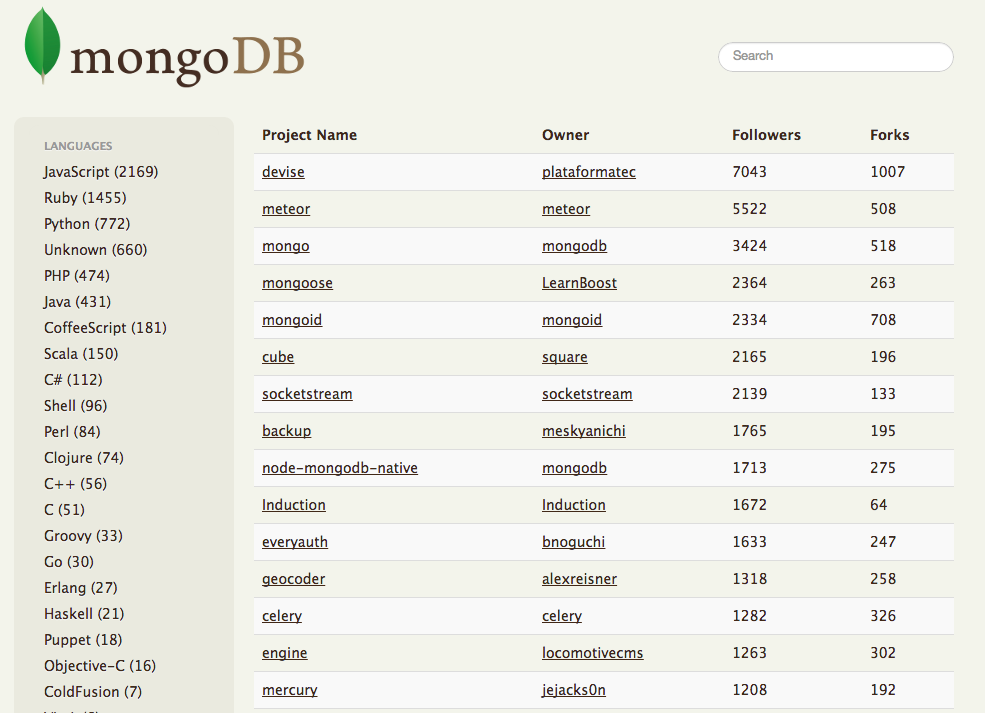
Ever wonder what type of open source MongoDB related projects are being developed these days? We did. So we hacked together a quick Github search & explore interface for any project Github reports as associated to MongoDB! Projects are organized by language, fully searchable and sorted by followers and forks. Built with Nodejs, Express and MongoDB.
https://github.com/TylerBrock/mongo-contributor-hub
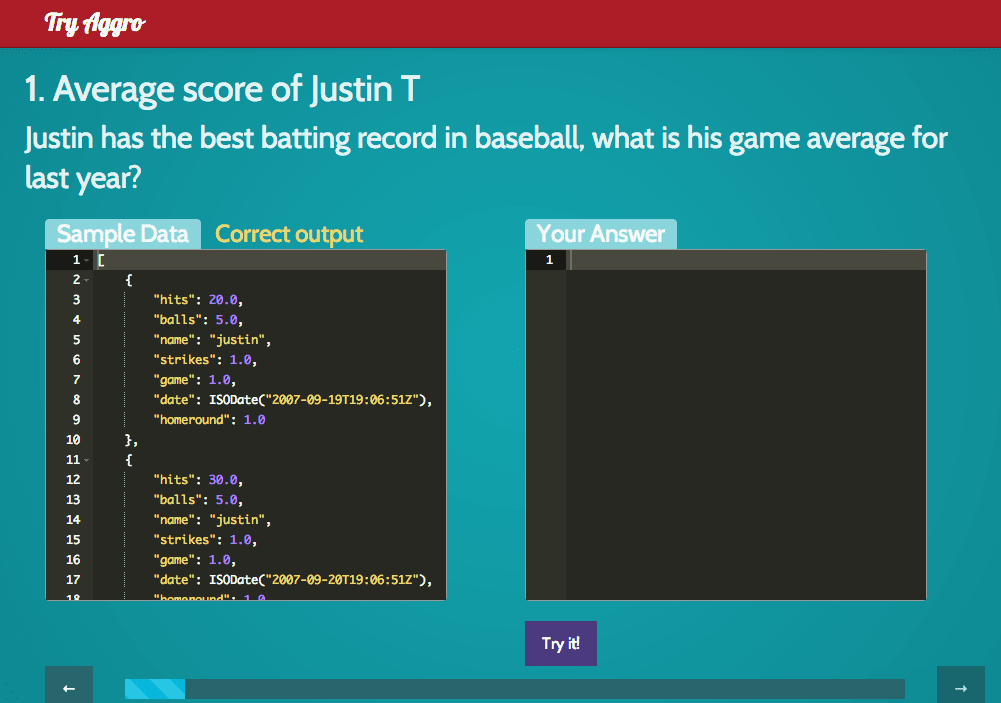
With thirteen challenging questions you’ll learn the ins and outs of aggregation with MongoDB. Will you be able to complete all the challenges and become an aggregation master?
https://github.com/rozza/try-aggro
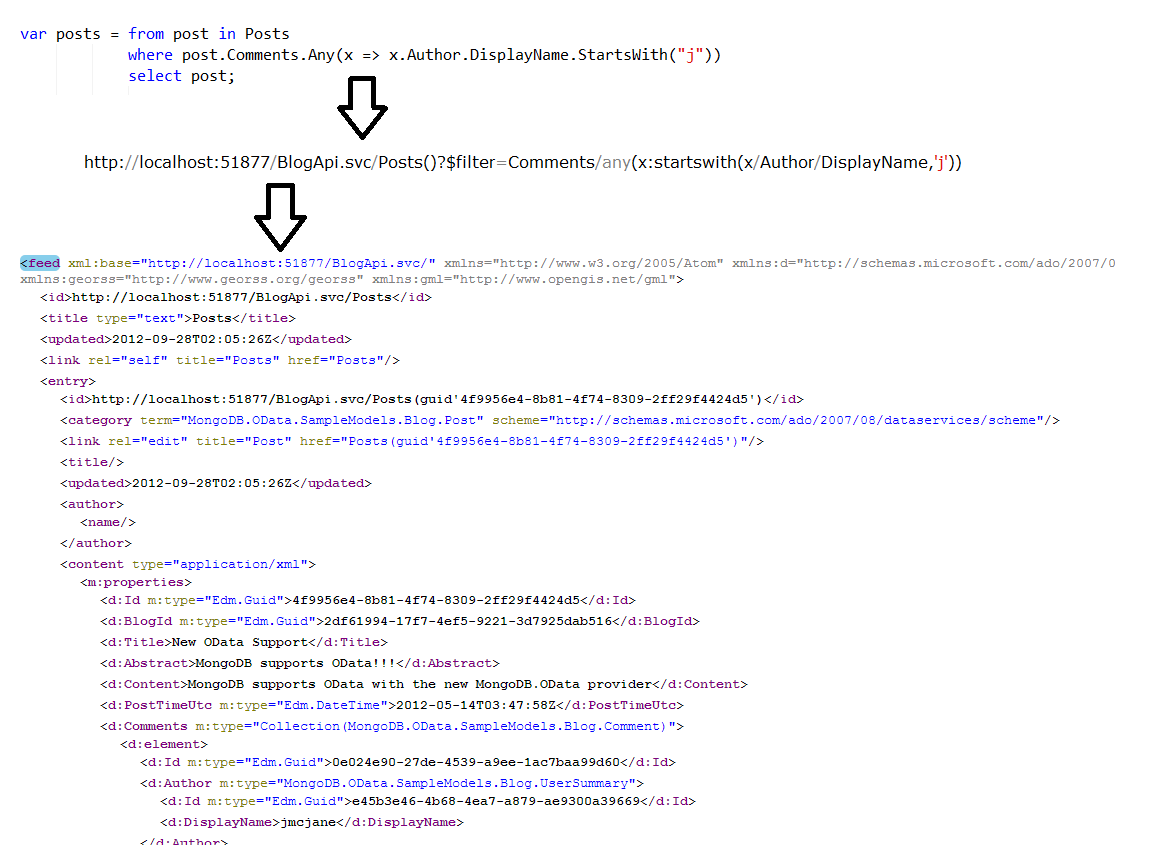
OData is a highly used protocol with clients in .NET, Java, jquery, and many more. It makes sense to be able to support these clients with a MongoDB backend. With OData v3, the protocol is now rich enough to support the rich document model MongoDB already provides. MongoDB.OData let’s you expose your entites (MongoDB documents), complex types (MongoDB embedded documents), and collections (MongoDB arrays) via OData and includes full support for queries and OData service operations. Support for updating is almost ready.
https://github.com/craiggwilson/mongo-dotnet-odata
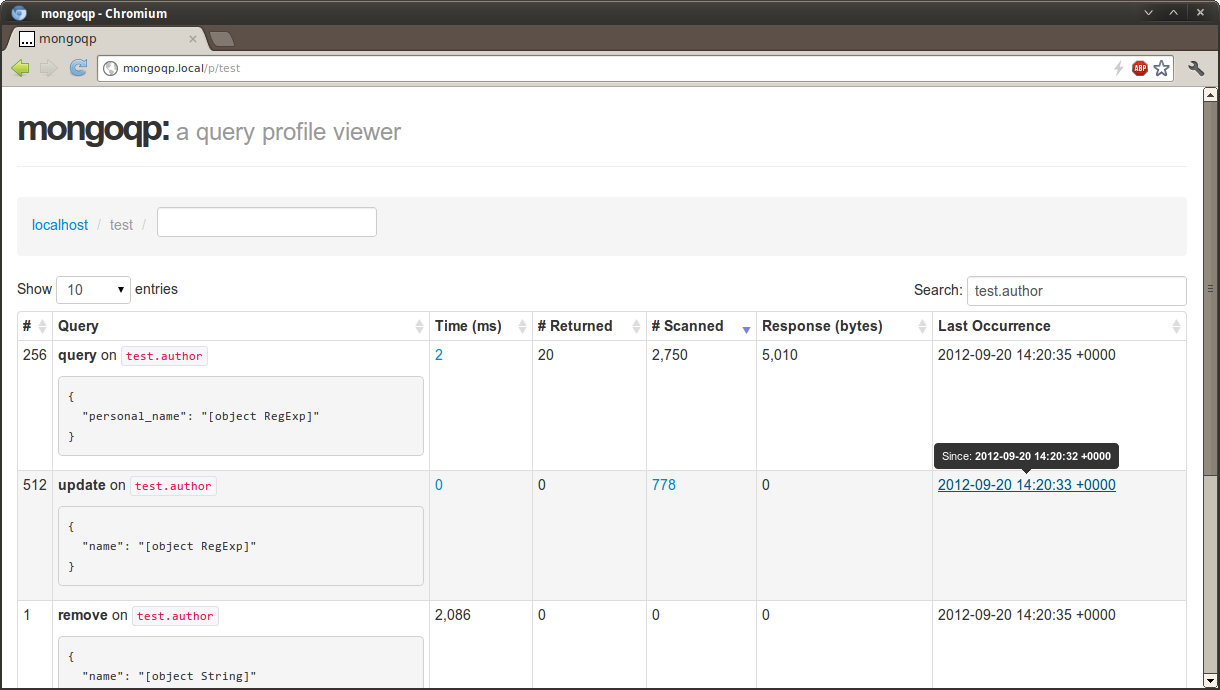
Logging slow queries is essential for any database application, and MongoDB makes doing so relatively painless with its database profiler. Unfortunately, making sense of the system.profile collection and tying its contents back to your application requires a bit more effort. The heart of mongoqp Mongo Query Profiler is a bit of map/reduce JS that aggregates those queries by their BSON skeleton (i.e. keys preserved, but values removed). With queries reduced to their bare structure, any of their statistics can be aggregated, such as average query time, index scans, counts, etc.
As big fans of Genghis, a single-file MongoDB admin app, the initial intent was to contribute a new UI with the profiler results, but one night was not enough time to wrap our heads around Backbone.js and develop the query aggregation. Instead, we whipped up a quick frontend using the Silex PHP micro-framework. With the hack day deadline no longer looming, there should be plenty of time to get this functionality ported over to Genghis. Additionally, the map/reduce JS may also show up in Tyler Brock’s mongo-hacker shell enhancement package.
While presenting mongoqp to our co-workers, we learned about Dan Crosta’s professor, which already provides many of the features we hoped to implement, such as incremental data collection. We think there is still a benefit to developing the JS innards of mongoqp and getting its functionality ported over to other projects, but I would definitely encourage you to check out professor if you’d like a stand-alone query profile viewer.
https://github.com/jmikola/mongoqp
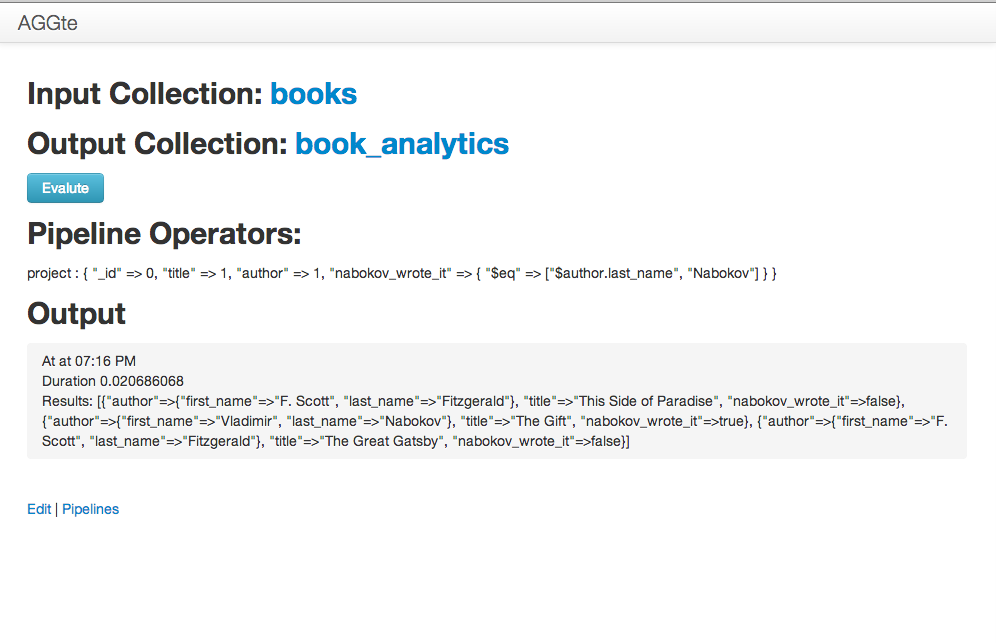
We built a web app for the new aggregation framework. It allows you to create pipelines using a web interface, making it easy for a user to play around with the new framework without having to use the command syntax. Users can incrementally add pipeline operators to test running aggregations with different operators, and can use the easy interface as an educational tool to learn how the pipelines work. The app also allows you to pipe the results of aggregation framework jobs straight to user-defined output collections and see a history of past jobs along with their run-time. The app is built in Ruby on Rails, using the MongoMapper ODM.